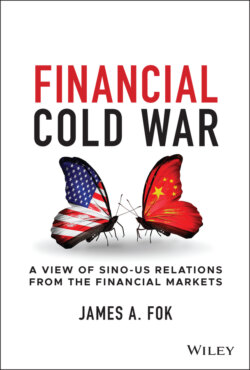Читать книгу Financial Cold War - James A. Fok - Страница 12
Legacy of the GFC
ОглавлениеThe 2008 GFC was a watershed event in post-WW2 history. Its significance lies not in the crisis itself, which shared a pattern with countless other financial crises, but in its causes and consequences, as well as a major turning point that it marked.
The ostensible causes of the GFC were the excesses that had been allowed to build up in the US subprime mortgage market. It was a story of greed, hubris, regulatory failures and policy missteps. However, casting a broader eye over the history of the build-up of these excesses, it becomes apparent that the origins of the GFC lay in structural imbalances that had built up in the global financial system over many decades. These are explored in more detail in Chapter 3.
The consequences of the GFC have been far-reaching and, whether we are conscious of them or not, they will continue to impact societies around the world economically, politically and diplomatically for a long time to come.
First, the direct financial impact of the crisis was devastating to a huge number of people. Livelihoods, security and community all suffered. Faith in a financial and social system that had promised stability and prosperity for decades was shattered. And we have yet to identify a system to replace it.
Second, although America had already done much to undermine the legitimacy of its global leadership through unilateralist and aggressive post-Cold War international policies, the GFC brought issues into much sharper focus. Other countries began to question the status quo of the global order and it became a spur to action. Reduced willingness to follow America's lead has complicated and slowed down the process of decision making on matters of global importance. The pursuit by other countries of alternatives to US-dominated international organisations has also generated diplomatic tensions.
Third, policy actions during and subsequent to the crisis have, for the most part, treated the symptoms rather than the root causes of the disease. Regulatory reforms have made the banking system less vulnerable to financial shocks. However, more fundamental underlying problems have not been tackled. Continued reliance on monetary policy and market self-correction mechanisms has failed to revitalise key parts of the economy. In addition, the prolonged application of some treatments, such as extraordinarily low interest rates, have contributed to a widening wealth gap. This, in turn, has stoked greater societal tensions.
Fourth, as these domestic and international tensions have simmered, we have witnessed a descent into more populist and nationalistic politics in many countries. This is spreading tensions and conflicts across many spheres.
Looking back at the crisis and events since, it is also clear that the GFC marked a major turning point in Sino-US relations. The illusion of American omnipotence was shattered, and China's own self confidence increased. This increased China's willingness to challenge the US where it felt its own interests were at stake and ushered in a more assertive attitude in the conduct of its international affairs.
The focus of this book is the escalation in tensions between the US and China. There is a severe risk that a misdiagnosis of key sources of tensions will lead to the wrong treatments being applied, allowing conflicts to spread and become more aggravated. It is therefore critical to carefully examine the history of the Sino-US relationship, including its financial dimensions, to correctly identify the key issues that must be addressed.
